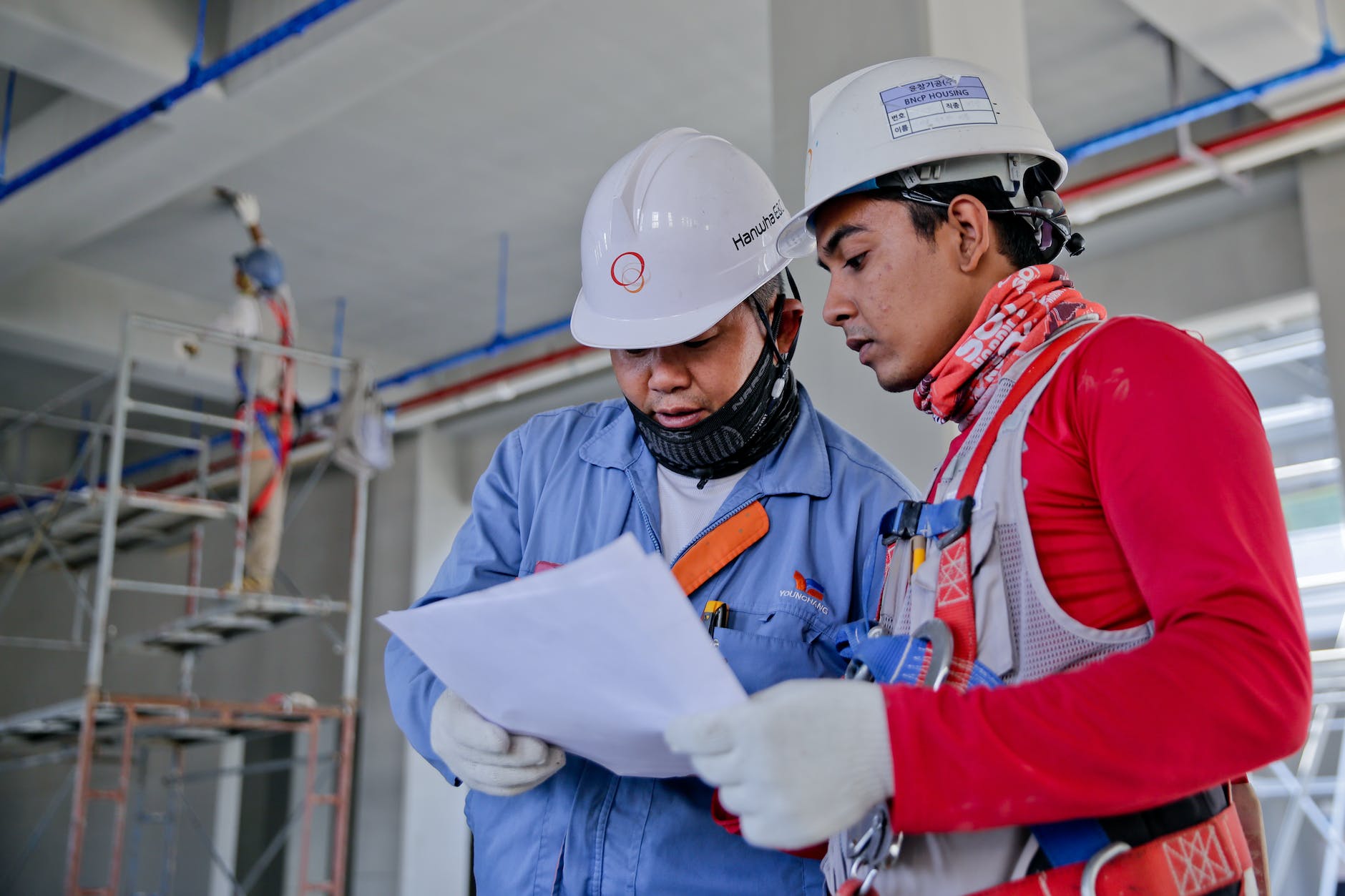Have you ever wondered what keeps professionals safe in environments that challenge the imagination, such as confined spaces and hard-to-reach areas? This is where the famous NR33 comes in. But, after all, what is NR33?
This is a question that not only resonates in the minds of workers who enter these spaces daily, but also among managers and security professionals who ensure the integrity of their teams.
NR33 is a compass in the world of workplace safety, guiding professionals through the labyrinth of risks and dangers inherent in confined spaces.
These environments, which can range from an underground storage tank to restricted areas within industrial facilities, are challenging and require more than courage and skill: they require knowledge, preparation and, above all, respect for safety standards.
In this article, we will explore together what NR33 is, its importance for professionals, especially electricians, and how it works to prevent accidents and preserve life in the workplace.
So, if you are a professional looking to better understand the NR33 guidelines or a manager looking to improve your team's safety practices, you are in the right place.
Let's embark on this journey of knowledge and security!

What is NR33?
First of all, let's dive into the world of Regulatory Standards. Imagine yourself entering an underground labyrinth, where every step needs to be carefully planned. This is the reality of workers in confined spaces.
NR33, or Regulatory Standard nº 33, is like a lighthouse in the fog, guiding safety in these environments. It is the foundation that ensures that workers can enter and exit these modern labyrinths, safe and sound.
At first, NR33 may seem like just a set of rules. However, she is much more than that. It's the difference between a day's work and a fatal accident. Like a silent guardian, she watches over the physical and mental integrity of those who venture into these spaces.
| Aspect | Explanation |
| goal | Ensure the safety and health of workers working in confined spaces. |
| Definition of Confined Space | Any area or environment not designed for continuous human occupancy, with limited means of entry and exit and insufficient ventilation to remove contaminants, or where oxygen deficiency or enrichment may exist. |
| Training | Mandatory training for all workers working in confined spaces, including knowledge about risks, use of equipment and emergency procedures. |
| Entry and Work Permit (PET) | Document that authorizes entry into confined spaces, ensuring that all safety measures are being complied with. |
| Personal Protective Equipment (PPE) | Equipment necessary to ensure worker safety, such as respirators, seat belts and insulating gloves. |
| Atmosphere Monitoring | Checking oxygen levels and the presence of dangerous gases in the confined space before and during workers' entry. |
| Rescue and Emergency | Plans and procedures established for emergency cases, including specific training for rescue in confined spaces. |
| Employer Responsibilities | Provide training, adequate equipment, and ensure the implementation of safety measures in accordance with NR33. |
| Worker Responsibilities | Participate in training, use the PPE provided and follow established safety procedures. |
| Regular Updates and Inspections | Constant maintenance of safety training and practices, as well as inspection and updating of equipment and procedures. |
But, after all, what does it mean for professional electricians? Continue reading to find out.
Why is it important for electricians?
NR33, specifically for electricians, is a standard that establishes safety practices for working in confined spaces.
For an electrician, this means following strict protocols when working in restricted locations, such as ducts, tanks or difficult-to-access areas, where risks are amplified.
In this way, NR33 serves as a guide to minimize these risks, ensuring that safety measures are followed religiously.
What are the training requirements under NR33 for electricians?
Under NR33, electricians are required to undergo specific training that covers identifying risks in confined spaces, use of safety equipment and emergency procedures.
In other words, this training is crucial as it equips electricians with the knowledge and skills necessary to work safely in these challenging environments.
The standard insists on the importance of continuous training, keeping workers up to date with the best safety practices.
What types of protective equipment are required by NR33?
According to NR33, electricians must use personal protective equipment (PPE) appropriate to the work environment. This includes, but is not limited to, respirators, seat belts, insulated gloves, and helmets.
Each piece of equipment plays a vital role in protecting the worker against specific hazards found in confined spaces, such as toxic gases, falls or electrical shock.
Confined spaces and Regulatory Standard 33.
Furthermore, to understand better, let's look at some stories. Imagine a worker who, without NR33, found himself in a chemical tank without adequate ventilation. The lack of oxygen was like an invisible monster, and he only survived thanks to the quick action of his colleagues.
On the other hand, we have another professional who worked with the NR33 at his side, as a protective shield, and carried out the same type of work without any problems.
Therefore, there are some crucial components of NR33, check it out:
- Risk Assessment and Control: Like a detective, Norm investigates and points out hidden dangers.
- Qualification and Training: Here, the norm is like an ancient master, imparting essential wisdom for safety.
- Suitable Equipment: The standard ensures that each worker is equipped like a knight, ready to face the challenges of the environment.
What are the main risks in confined spaces for electricians?
Electricians face several risks in confined spaces, including suffocation, gas poisoning, electric shock, and falls. These risks are exacerbated by the confined and often poorly ventilated nature of these spaces.
Additionally, proximity to electrical systems increases the risk of electrical accidents, making strict adherence to guidelines essential. Machete NR33 course to better understand its importance for electricians.
How does the standard help prevent accidents for electricians?
NR33 plays a crucial role in preventing accidents by establishing a set of safety procedures and requirements. This includes risk assessments before entering confined spaces, constant monitoring of conditions within the space, and the availability of emergency equipment.
By following these guidelines, electricians can minimize the risks associated with their work.
Are there specific rescue procedures under NR33?
Yes, NR33 requires employers to establish and practice specific rescue procedures for confined spaces. These procedures must be known and practiced regularly by electricians, ensuring that, in the event of an emergency, rescue teams can act quickly and efficiently to safeguard the lives of workers.
NR33 and Legislation
Currently, with technological evolution, the NR33 has adapted, like a chameleon, to new work realities. Companies that adopt it not only protect their employees, but also build a culture of safety.
Similarly, like the foundation of a house, it is based on Brazilian legislation. It is not a choice, but a legal obligation, a shield against the storms of lawsuits and fines.
Impact on companies
Adherence to occupational safety regulatory standards represents an essential practice for companies, providing benefits from both a financial and human point of view. By implementing and strictly following these standards, organizations are able to mitigate accident risks and promote safer working environments.
This not only reduces costs associated with labor lawsuits and possible compensation, but also contributes to preserving the health and physical integrity of employees. Furthermore, compliance with occupational safety regulations strengthens the company's image, increasing the trust of employees, customers and partners.
Investing in safety and well-being in the workplace is not just a legal obligation, but a smart strategy to promote a productive, sustainable and socially responsible environment. Therefore, we can say that:
- Companies that do not follow the guidelines: Like a ship without a compass, they face risks and fines.
- Companies that follow the guidelines: They navigate safely, protected by the principles of the standard.
What are the legal responsibilities of electricians under NR33?
Electricians have a legal responsibility to follow all guidelines established by NR33. This includes wearing appropriate PPE, participating in regular training, and adhering to safety and rescue procedures.
Therefore, ignoring these guidelines not only puts your safety at risk, but can also result in legal sanctions and fines for the employer.
How does it impact employer liability?
Employers are responsible for ensuring that all NR33 requirements are met. This includes providing adequate training, necessary safety equipment, and establishing emergency procedures.
Failure to meet these responsibilities can lead to serious legal consequences, including fines and lawsuits.
Does NR33 apply to all types of confined spaces?
Yes, NR33 applies to any confined space where electricians can work. This includes locations with limited entry and exit openings, spaces not designed for continuous occupancy, and locations that may present risks to the health or safety of workers.
How important is continuous knowledge of this standard for electricians?
Keeping up to date with NR33 guidelines is vital for the continued safety of electricians. As new technologies and methods are introduced, the standard can be updated. Therefore, continuous knowledge ensures that electricians are always prepared to face the challenges of their work environments as safely as possible.
Source: Engehall
Conclusion
Therefore, NR33 is essential, not just as a legal requirement, but as a pillar of safety and health at work. In other words, she is the light in the darkness, the guide in the maze, ensuring that each worker returns home safely.




